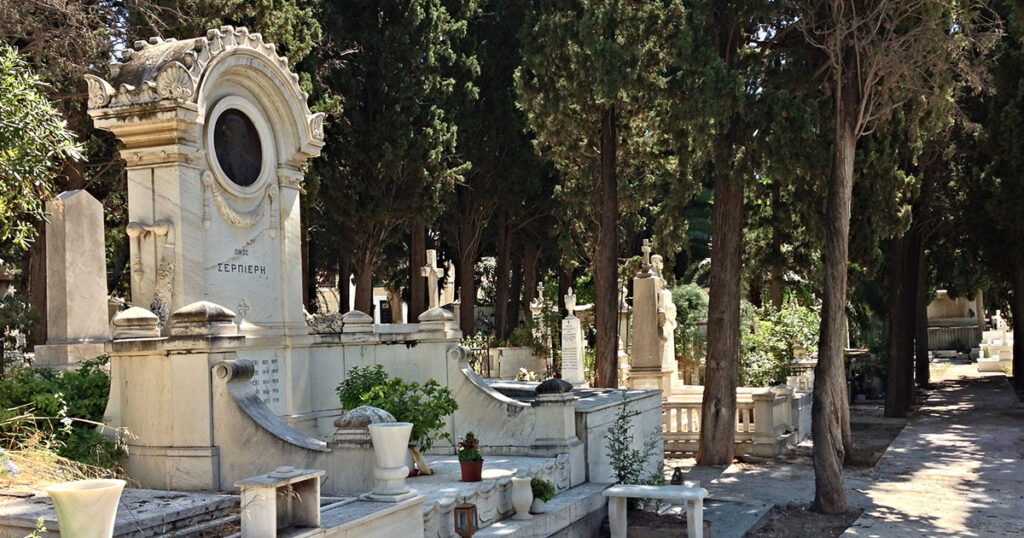
Movement and stillness: the one we had taken for granted, the other perhaps we had forgotten. Greece’s lockdown in Athens seemed to bring both of these to the fore, and the art form that seemed to speak most to me, about being stuck in situ, being patient, paying attention, was statuary.
We’re lucky to be close to the First Cemetery of Athens, which remained open while museums and archaeological sites were closed. (Archaeological sites have now reopened, but are eerily empty of tourists.) A working cemetery, it is also essentially a statue garden, including works by famous Greek sculptors from 19th-century neoclassicism to the present. Not only human and angelic figures in the round and in bas-relief, in marble and bronze, but owls and lions, Greek and Egyptian sphinges. My favorite sphinx is a brazen one perched like an umlaut atop Adolf Furtwängler’s grave-plinth. She’s about the size of a lynx. Her muscular haunches, her coiled tail, make her look ready to pounce, while her verdigris camouflages her among cypress boughs.
Although figurative representation dominates, there are some completely abstract shapes, and some pieces in between. One ambiguous upright figure, enveloped in a downward swirl, seems to represent a veiled woman whose face is eroded away entirely: Lot’s Wife is the title of this piece, my guidebook informs me, by the woman sculptor Phroso Euthumiades. Many sculptors are buried here, their own monuments sometimes a work in progress, a human face emerging (or disappearing), say, into a block of undressed stone. The most famous sculptor buried at the First Cemetery is Yiannoulis Chalepas, whose most celebrated artwork is also here, the Sleeping Female Figure, or “sleeping beauty,” at the grave of Sofia Afentakis. Fresh flowers somehow always find their way into her marmoreal fingers, which seem about to stir.
There is wit and whimsy too among the memento mori. One headstone bears a bas-relief of a modern and athletic-looking angel flying horizontally, holding what might be a basketball or soccer ball: going for a slam-dunk, or maybe a goalie blocking a goal? Alternately, it might be the world in his hands. Many of my favorite pieces defy expectations for sculpture to inhabit the vertical axis: the starved bronze woman with a baby at her withered breast who lies supine at the entrance, a monument to the Mother of the Occupation, the famine victims of 1941-42. One of the most unusual pieces is a bright white marble box, one side open, with little shapes, some abstract, some suggestive of scenes from ancient frescos (a Minoan diver), jig-sawed out of the sides to let in light (or maybe if a candle were lit within, shapes of light would shoot out). The marble cutouts are arranged inside the box, a collection of curiosities.
The stillness of the statues is calming, contagious even, their stoic endurance of sun and rain. They move only in a fourth dimension, through time. You walk around a piece of sculpture; it stays still, it stays the same, but alters depending on how you look at it: you are the change. Even in such somber surroundings, I feel free and light just being able to move my own body, to walk in circles around something stuck in one place and attitude. I think of Elizabeth Barrett Browning’s sonnet “Grief,” which imagines the emotion as its own monument: “Touch it; the marble eyelids are not wet: / If it could weep, it could arise and go.”

